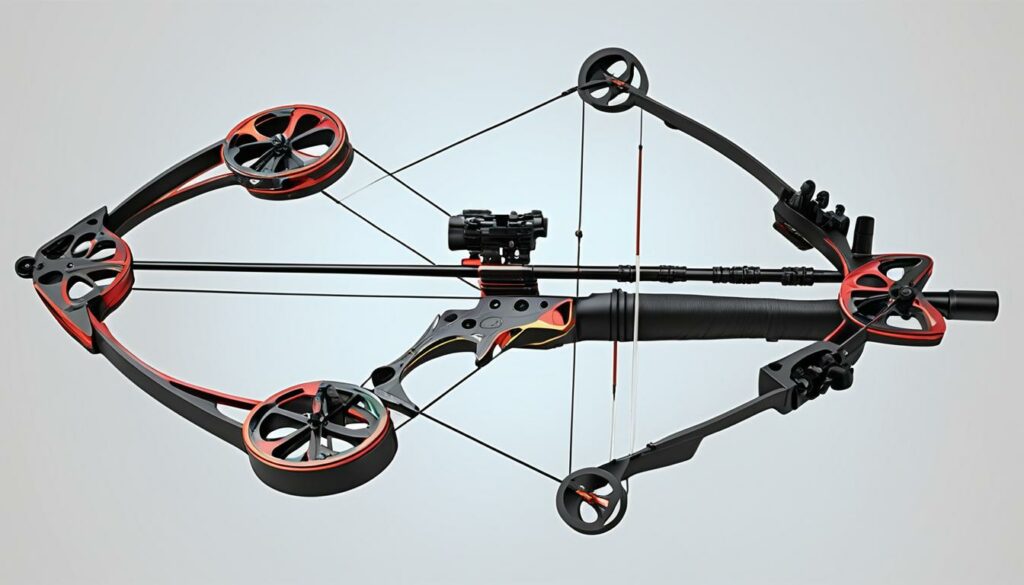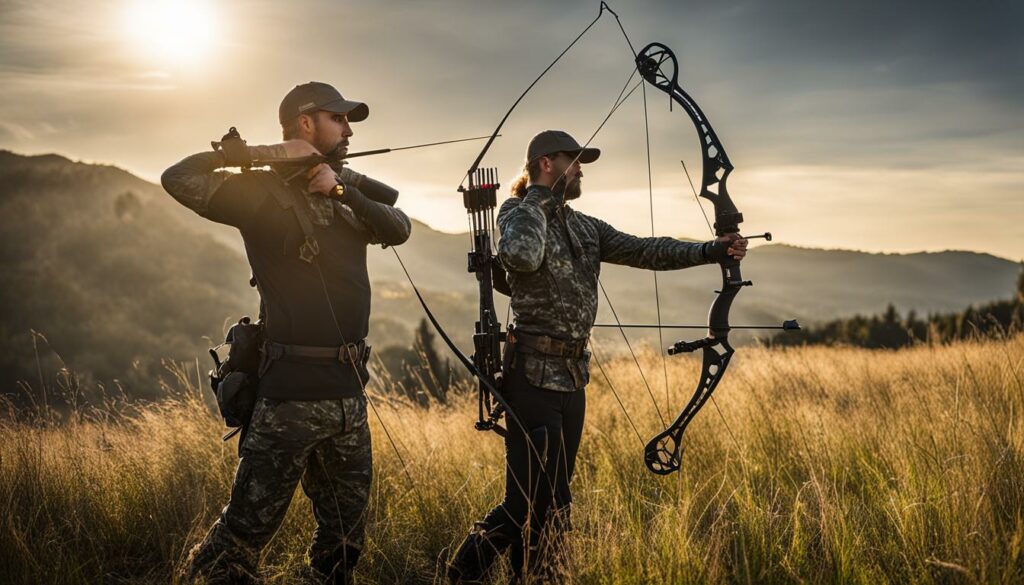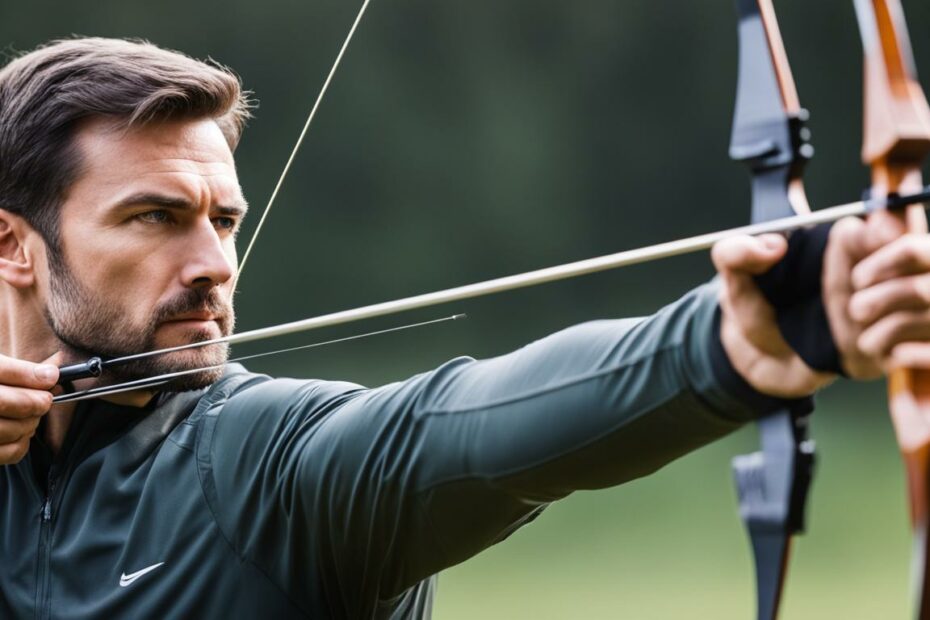Archery enthusiasts have long favored recurve bows for their simplicity and traditional appeal. But are recurves easier to handle than other bows when drawing a bow? Let’s delve into the factors influencing the ease of drawing a recurve bow and shed light on this question.
When examining the draw weight of recurve bows, the archer’s strength and skills must be considered.
Recurve bows come in various draw weights, and choosing the appropriate draw weight is crucial for achieving optimal performance.
The design of the recurve bow also significantly influences its ease of drawing. The bow’s limbs curve away from the archer, storing more energy and allowing for a faster arrow release.
This design feature impacts the bow’s draw difficulty, requiring the archer to exert more force during the draw cycle.
For those passionate about traditional archery and bow hunting, mastering the technique of drawing a recurve bow is essential to developing archery skills. The challenge of drawing and aiming a recurve bow can enhance an archer’s accuracy and overall proficiency.
Is a Compound Bow Easier to Draw?
Compound bows have unique characteristics that set them apart from recurve bows in terms of the ease of drawing a bow. These advanced archery equipment are known for their modern features and are often preferred by archers shooting higher draw weights.
The let-off feature is one key factor contributing to the ease of drawing a compound bow. Unlike recurve bows, compound bows utilize a system of pulleys and cables that significantly reduce the weight the archer needs to hold at full draw. This let-off feature allows for a more comfortable and controlled draw, especially with higher draw weights.
In addition to the let-off, the draw cycle of a compound bow differs from that of a recurve bow. In a compound bow, the peak weight is reached early in the draw cycle, and then the weight gradually decreases as the bow is fully drawn. This draw cycle can be more forgiving and easier on the archer, reducing muscle fatigue and strain.
Furthermore, the archer’s biomechanical position while drawing a compound bow can also affect the ease of the draw. The pulley system and design of compound bows allow for better alignment, enabling the archer to maintain a more stable and efficient shooting position throughout the drawing process.
To visually illustrate the differences between a compound bow and a recurve bow, consider the following table:
| Factors | Compound Bow | Recurve Bow |
|---|---|---|
| Draw Weight | Higher draw weight, but with let-off | Higher draw weight, no let-off |
| Draw Cycle | Peak weight reached early in the draw cycle | Consistent weight throughout the draw |
| Biomechanical Position | More stable and efficient shooting position | Relies on the archer’s strength and skill |
As you can see, compound bows offer certain advantages that make them potentially easier to draw, especially for archers shooting higher draw weights. However, it’s important to note that individual differences, such as anatomy and strength, can still affect the overall ease of drawing a compound bow.

The Draw Process of Recurve Bows
Recurve bows rely solely on the archer’s strength to draw the bowstring. Unlike compound bows, recurves do not have a let-off feature or defined draw stops. This means that the archer holds the full draw weight throughout the entire draw cycle, which can increase the difficulty of drawing a recurve bow, especially at higher draw weights.
However, recurves offer a biomechanical advantage later in the draw, where the archer has more leverage and strength to handle the heaviest weight. Consistency in the drawing process is crucial for accuracy with a recurve.
To understand the drawing process of recurve bows and its impact on accuracy, it’s essential to consider the biomechanical position of the archer. When drawing a recurve bow, the archer engages their back muscles, specifically the rhomboids and latissimus dorsi, to powerfully pull the bowstring towards them.
This movement requires proper posture and alignment to optimize energy transfer from the archer’s body to the bow.
One key factor in the recurve bows’ drawing process is the draw weight. Draw weight refers to the force required to pull the bowstring to a full draw. It is measured in pounds, and higher draw weights can make drawing a recurve bow more challenging. The archer must build sufficient strength and technique to handle the draw weight effectively.
While recurve bows do not have a draw stop like compound bows, archers utilize specific techniques and positions to achieve consistent draw lengths.
A common technique is anchoring, where the archer establishes a consistent point of contact between their hand or fingers and their face, usually at the corner of the mouth or the jaw. This anchoring point helps ensure consistent draw lengths and accurate shots.
| Advantages | Disadvantages | |
|---|---|---|
| Draw Process of Recurve Bows | – Offers biomechanical advantage in the later part of the draw | – Requires holding the full draw weight throughout the entire draw cycle |
| Draw Weight | – Can be adjusted to suit individual strength and skill | – Higher draw weights can be more challenging to handle |
| Consistent Draw Length | – Anchoring technique helps achieve consistent draw lengths | – Lack of draw stop may require extra focus on maintaining consistent form |
| Accuracy | – Proper draw technique and form contribute to accuracy | – Requires mastering consistent draw process for optimal accuracy |
Comparing the Two Bow Types
When choosing between compound and recurve bows, several factors must be considered, such as ease of use, accuracy, transportability, kinetic energy, and durability. Each type of bow has its advantages and challenges.
Ease of Use
Compound bows are often considered easier to use compared to recurve bows. This is due to their mechanical advantages, such as cams and pulleys, which make the bow more forgiving and help maintain accuracy.
Compound bows have defined draw stops that provide consistent wall and let-off, allowing the archer to hold less weight at full draw and enhancing overall shooting comfort.
On the other hand, recurve bows offer a simpler and more traditional approach to archery. They rely solely on the archer’s strength, requiring a stronger and more direct connection between the archer and the bow. This can be seen as a challenge or an opportunity for archers looking to hone their skills and form.
Accuracy
Compound bows are more accurate due to their advanced technology and design. A release aid facilitates a more consistent release, reducing variations caused by finger release. Compound bows also offer a longer axle-to-axle length, which increases stability and reduces pin float, resulting in improved accuracy.
While more challenging to shoot accurately, recurve bows can offer a rewarding experience. The archer must rely on proper form, consistent anchor points, and a smooth release to achieve accuracy. This creates an opportunity for archers to develop and refine their shooting techniques.
Transportability
Recurve bows have the advantage when it comes to portability. They are typically lighter and easier to disassemble, making them more convenient for transport. Whether you’re hiking through the wilderness or traveling to a competition, recurve bows offer greater ease of transport.
Compound bows, with their complex mechanisms and longer axle-to-axle length, can be bulkier and require more effort to transport. However, modern compound bows often feature convenient features like detachable quivers and compact designs to make transportation more manageable.
Kinetic Energy
When it comes to kinetic energy, compound bows have the upper hand. The advanced technology in compound bows allows for higher draw weights and greater stored energy, resulting in faster arrow speeds and increased penetration. This is especially beneficial for hunting situations where the extra kinetic energy can make a difference.
Although they may not match the kinetic energy of compound bows, recurve bows offer their advantages. The faster draw and aiming cycle of recurve bows can provide a quicker response time in target shooting and competition scenarios, requiring archers to rely on their skill and precision.
Durability
When it comes to durability, recurve bows generally have the advantage. They are simpler in design, with fewer moving parts, making them less prone to breakage or mechanical failures. In the event of damage, repairs to recurve bows tend to be simpler and more accessible.
Compound bows, with their complex mechanisms and cam systems, can be more susceptible to malfunctions. Compound bows often require specialized tools and expertise for repairs, which can be more time-consuming and costly.

| Factors | Compound Bows | Recurve Bows |
|---|---|---|
| Ease of Use | ✓ | ✓ |
| Accuracy | ✓ | ✓ |
| Transportability | ✗ | ✓ |
| Kinetic Energy | ✓ | ✗ |
| Durability | ✗ | ✓ |
Recurve Bows for Hunting and Compound Bows for Speed
Both recurve and compound bows have advantages in archery and the choice of bow for different purposes. Specifically, recurve bows are often favored for hunting, while compound bows excel in speed shooting competitions.
Let’s start with hunting. Recurve bows require the archer to hold higher draw weights, which can limit the effective hunting range. However, this drawback is compensated by the challenge they offer for those seeking to get closer to their game.
Holding higher draw weights allows for a more intimate approach, requiring skill and precision to ensure a successful hunt.
On the other hand, compound bows provide certain advantages that make them ideal for hunting situations that demand a longer effective range.
The mechanical let-off feature of compound bows allows the archer to hold a lower weight at full draw, minimizing fatigue and increasing accuracy. Compound bows also generate higher kinetic energy, resulting in faster arrow speeds and flatter trajectories, greatly aiding in longer-distance shots.
To compare and contrast the two bow types for hunting, let’s take a closer look at the key factors:
| Factors | Recurve Bows | Compound Bows |
|---|---|---|
| Draw Weight | Higher draw weights | Lower effective hunting range |
| Kinetic Energy | Lower kinetic energy | Higher kinetic energy for faster arrow speeds |
| Accuracy | Requires skill and precision due to higher draw weights | Improved accuracy due to mechanical let-off and flatter trajectories |
| Effective Hunting Range | Limitation due to higher draw weights | Expanded range due to higher kinetic energy |
Now, let’s shift our focus to speed shooting competitions. Compound bows are preferred for these competitions due to their faster draw and aiming cycle. With the combination of mechanical let-off and shorter draw lengths, compound bows enable archers to achieve multiple shots quickly, enhancing their overall speed and efficiency.
With that being said, speed shooting competitions involve a different set of skills and requirements compared to hunting. These events prioritize speed and accuracy within a controlled and regulated environment, where archers shoot at predefined targets within a specified time frame.
Compound bows offer a clear advantage in this context, as they are designed to optimize performance and precision in high-speed shooting scenarios.
Choosing Based on Personal Preference and Goals
The choice between recurve and compound bows ultimately comes from personal preference and individual archery goals. Archers often develop a strong connection to their chosen bow, viewing it as an extension of their bodies. Understanding your archery goals and preferences will help you make the right choice.
Recurve archers value the traditional aspect of archery and appreciate the simplicity and elegance of a recurve bow. They enjoy the challenge of mastering the bow’s mechanics and believe in the importance of honing their skills. Many recurve archers find fulfillment in Olympic archery competitions, where recurve bows dominate.
On the other hand, compound archers often see the bow as a tool to achieve specific objectives. They may use different bows for various archery activities, such as hunting, target shooting, or 3D archery. Compound bows offer a wider range of divisions and options for competition, catering to different styles and preferences.
When deciding, consider factors such as cost, ease of use, familiarity, and the level of competition you aspire to. A recurve bow is likely your best fit if you prefer traditional archery or are interested in Olympic archery.
They may be the better choice if you’re chasing speed or have specific archery goals that align with the advantages of compound bows.
Conclusion – A Choice that Fits Your Needs
Regarding archery equipment, the choice between recurve and compound bows is ultimately personal. Each type of bow offers unique advantages and challenges, catering to different archers with varying skill levels and preferences.
With their traditional design, recurve bows require more physical strength to draw, offering a rewarding and authentic archery experience. These bows rely on the archer’s skill and precision, making them a popular choice for those who enjoy the challenge and artistry of traditional archery.
On the other hand, compound bows are designed with advanced mechanical features that enhance ease of use. These bows provide advantages such as a let-off feature, which reduces the holding weight at full draw, and defined draw stops, allowing for consistent and accurate shooting.
Compound bows are favored by archers seeking precision and reliability, especially in competitive settings.
Ultimately, the best bow for you depends on your goals and skill level. A recurve bow may be the right choice if you’re a beginner or looking for a more traditional experience. A compound bow may better suit your needs if you prioritize ease of use and precision.
Consider your preferences, archery goals, and individual skill levels when deciding. With the right bow in hand, you’ll be able to enjoy the sport of archery and achieve the level of performance that fits your needs.
FAQ
Are recurve bows easier to draw compared to other types of bows?
The ease of drawing a recurve bow depends on factors such as draw weight, bow design, and the archer’s strength and skills. Recurve bows do not have a let-off feature or defined draw stops, so the archer holds the full draw weight throughout the entire draw cycle, which can increase the difficulty, especially at higher draw weights.
However, recurve bows offer biomechanical advantages later in the draw, where the archer has more leverage and strength.
Is a compound bow easier to draw?
Compound bows, known for their advanced engineering and modern features, often have higher draw weights. However, the let-off feature in compound bows allows the archer to hold a lower weight at full draw.
The draw cycle of a compound bow differs from that of a recurve bow, with peak weight reaching early in the draw cycle. The ease of drawing a compound bow depends on the archer’s anatomy and strength.
What is the draw process of recurve bows?
Recurve bows rely solely on the archer’s strength to draw the bowstring. Unlike compound bows, recurves do not have a let-off feature or defined draw stops. This means the archer holds the full draw weight throughout the draw cycle.
However, recurves offer a biomechanical advantage later in the draw, where the archer has more leverage and strength to handle the heaviest weight. Consistency in the drawing process is crucial for accuracy with a recurve.
How do compound bows and recurve bows compare?
Compound bows are often considered easier to use due to their mechanical advantages, defined draw stops, and shooting with a release aid. Recurve bows offer a simpler, more traditional approach to archery.
While compound bows provide greater kinetic energy and can shoot faster arrows, recurve bows offer the challenge of a faster draw and aiming cycle, requiring the archer to rely on their skill and form.
Recurve bows are generally easier to transport and carry, and they are also more durable and easier to repair compared to compound bows.
Are recurve bows or compound bows better for hunting and speed shooting competitions?
Recurve bows require the archer to hold higher draw weights, limiting the effective hunting range but challenging those seeking to get closer to the game. Compound bows, with their mechanical let-off and higher kinetic energy, provide the advantage of a longer effective hunting range.
However, compound bows excel in speed shooting competitions, where the faster draw and aiming cycle allow for multiple shots in a short amount of time.
How should I choose between recurve bows and compound bows?
The choice between recurve and compound bows ultimately comes down to personal preference and individual archery goals. Recurve archers often feel a strong connection to their bows, while compound archers tend to see the bow as a tool and may use different bows for different types of archery activities.
Recurve bows are commonly used in Olympic archery competitions, while compound bows offer more divisions and competition options. When choosing a bow, consider the type of archery you are interested in and your level of challenge and precision.
What is the conclusion about the ease of drawing recurve bows?
Whether recurve bows are easier to draw than others depends on various factors. Recurve bows require more physical strength and offer a traditional approach to archery. On the other hand, compound bows provide mechanical advantages and ease of use.
The choice of bow should be based on individual preferences, goals, and levels of archery skill to ensure the full enjoyment of the sport.
